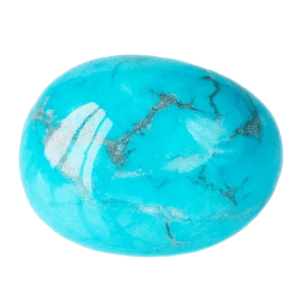Contents
The History of Turquoise Stone
The History and Healing Properties of Turquoise Stone
Turquoise is one of the oldest and most cherished gemstones in human history. With its distinctive blue-to-green shades, turquoise has been valued for thousands of years as a symbol of purity, protection, and spiritual energy. Among all varieties, Neyshabur Turquoise from Iran is globally recognized for its unmatched quality and deep, vivid blue color.
A History Dating Back Over 6,000 Years
Archaeological excavations in Iran have uncovered turquoise jewelry dating back more than 6,000 years, proving that this gemstone has been an integral part of Persian culture since ancient times.
In ancient Egypt, turquoise was also treasured by pharaohs. The tomb of Tutankhamun contained turquoise-adorned jewelry, highlighting its sacred and royal value. In Persia, turquoise was used not only in jewelry but also in art and architecture. The iconic turquoise-blue domes of Islamic mosques symbolize the sky, spirituality, and eternal beauty.
Spiritual and Metaphysical Benefits
Throughout history, turquoise has been considered a protective stone. In Persian culture, it was believed to ward off the evil eye and bring good fortune. Native American tribes saw turquoise as a sacred stone representing courage, wisdom, and a connection to the heavens.
In crystal healing, turquoise is associated with the throat chakra, helping improve communication, emotional balance, and self-confidence. It is also thought to reduce stress, promote serenity, and strengthen inner truth.
Physical and Healing Properties
Turquoise has also been linked with various healing benefits in traditional medicine. Ancient texts mention its use to boost the immune system, improve respiratory health, and support blood circulation. While modern science has not fully confirmed these claims, many gemstone enthusiasts continue to value turquoise for its holistic and therapeutic benefits.
Turquoise in Jewelry Design
Because of its vibrant color and natural beauty, turquoise remains one of the most popular gemstones in fine jewelry. It pairs beautifully with gold, silver, and other precious metals, creating timeless rings, necklaces, bracelets, and earrings.
Among all sources, Persian (Iranian) turquoise, especially Neyshabur turquoise, is highly sought after by jewelers and collectors worldwide due to its rare clarity and unique matrix patterns. Proper care is essential: turquoise is a relatively soft stone, and exposure to oils, perfumes, or chemicals may cause discoloration over time.
Conclusion
From the 6,000-year-old turquoise jewelry discovered in Iran to modern luxury collections, turquoise has never lost its charm. It is more than just a gemstone—it represents cultural heritage, spiritual strength, and timeless elegance.
If you are looking to buy authentic turquoise jewelry, especially Neyshabur turquoise from Iran, you are not only choosing a beautiful gemstone but also carrying a piece of ancient history with you.

